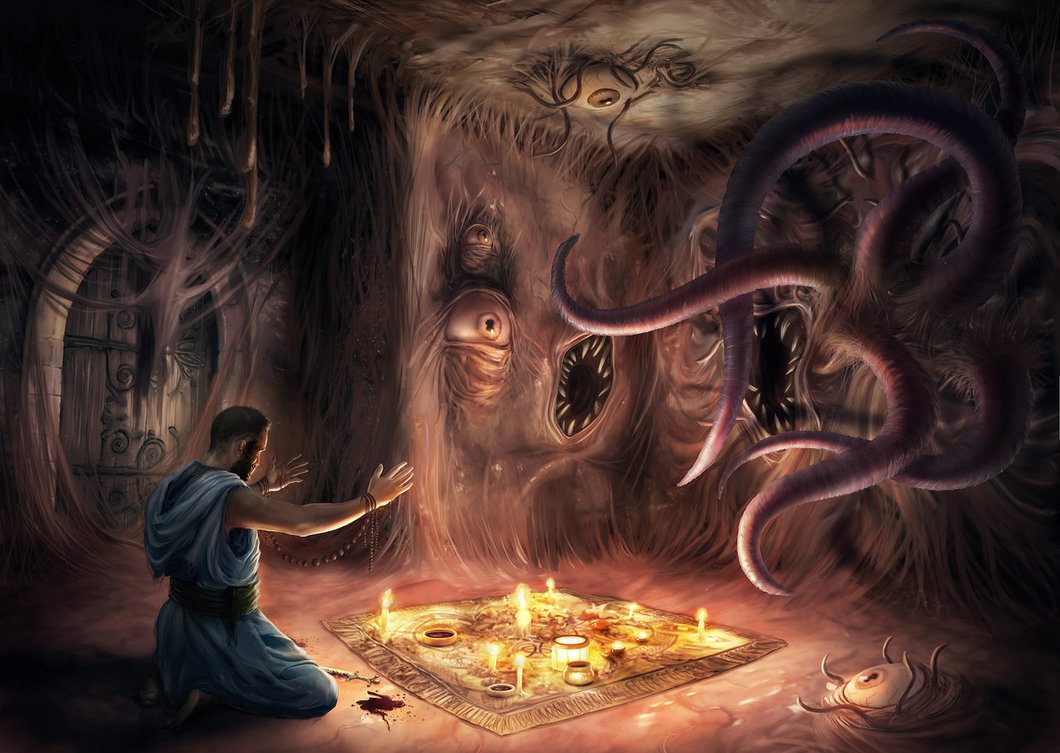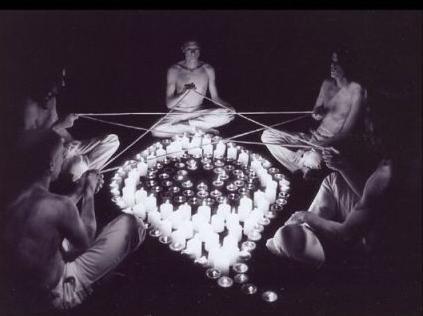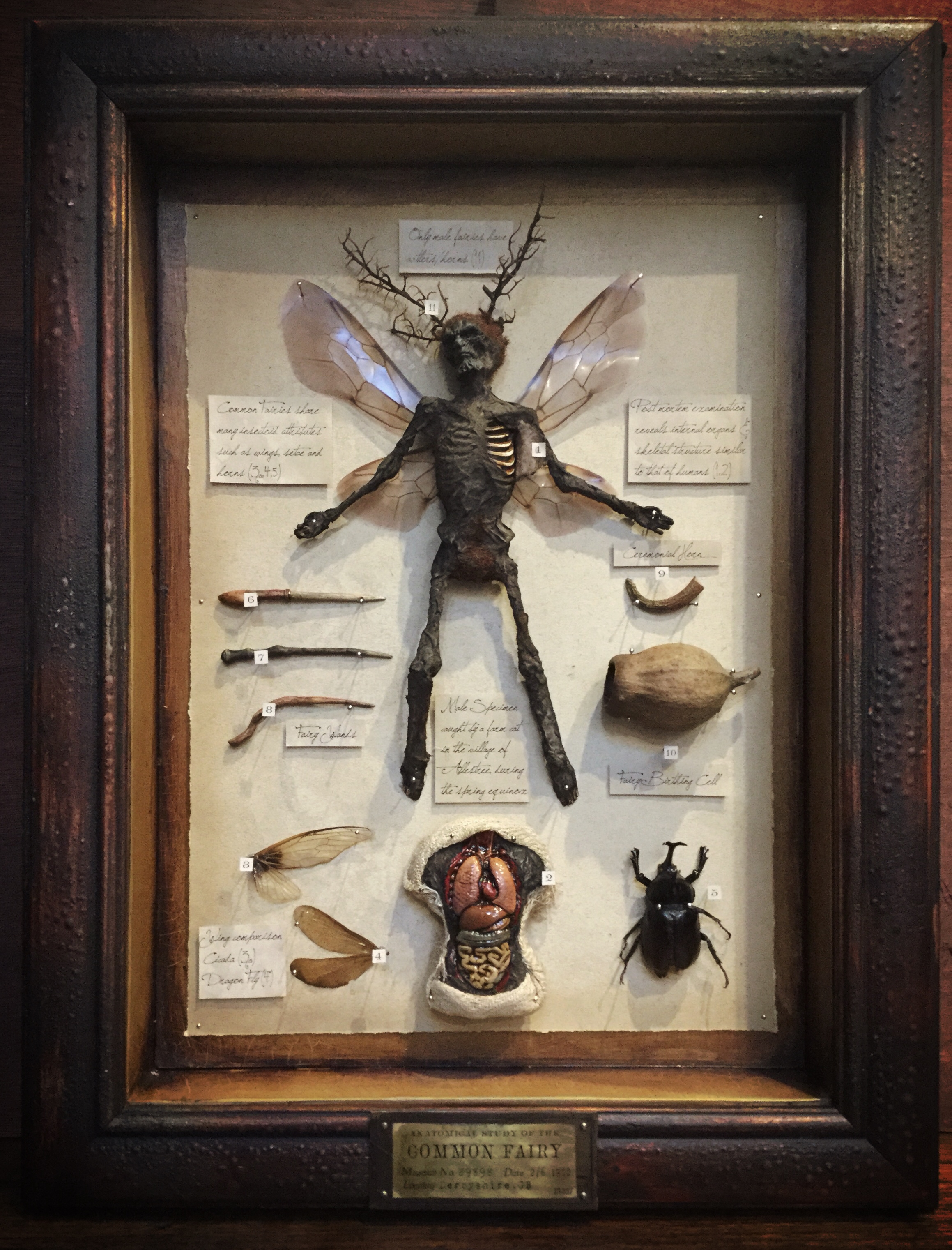Tales from the Fairy Farm
Could this be the location for The Fairy Podcast's very first field report? Fiona has mentioned she'd be willing to spend the night camping on a fairy fort at Pat Noone's farm in Galway, Ireland. While I admire her bravery, it's quite possible that the night could end up somewhere between 'Don't Be Afraid Of The Dark' and 'The Blair Witch Project'. However, while Fiona explores the underworld for seven years I'll loyally continue the podcast on my own until she returns to the world above.
'Looking at fairies on my farm is the same as looking at traffic in Dublin' - Farmer who has 'the words' celebrates May Day
“Looking at fairies on my farm is the same as looking at traffic in Dublin. But they don’t come everyday.”
“I kind of expect it. When I was younger if I hadn’t seen them, you’d think there was something wrong. I’ve seen them on a good few occasions after that.”
Pat Noone (52) lives on a 60-acre farm in Galway, and says that 16 acres of it is a fairy field – complete with a fairy fort, a fairy tree and a tunnel running through it.
On his land also lies a megalithic cairn and a fairy stone, monuments that have attracted visitors as far away from Pakistan.
“[The fairy field] has the portal to the fairies – where the whitethorn meets the blackthorn. I have a cairn where an Irish chieftain was buried - there are a lot of those in Sligo.”
“[The fairy field is] a very special place and people have come out frightened out of it.”
Growing up, Pat would hear his father regal visitors with folklore tales, and he’d see him giving tours around the farm.
“My father was a historian as well as a great folklorist, and had a lot of history of the local area – he was an authority on local history.”
“When I was small, people would bring him a half quarter of tobacco and he’d bring them around and show them the fairy forts and the fields.”
“I was never frightened of the fairies, I’d heard a lot of stories about them. I’ve been farming since I was 14 or 15 and I ran into the fairies because I was up all night calving or lambing.”
“I met them on a few occasions, I chatted to them. They say you should never take a drink from the fairies, but I took a drink from them.”
Today, May 1, is one calendar day in particular that Pat keeps watch for fairies – and hares.
“I’ve often seen the Irish hare disappear into the hills in the morning, they become fairies early in the morning.”
Traditionally on May 1, a 'May Bush' which is usually a Whitethorn (Fairy Tree), is decorated with rags and colourful ribbons to pay homage to the fairy folk and make wishes for the year ahead.
May Flowers are also traditionally thrown onto roofs of houses on May 1 to appease the fairies.
“Every farmer is up May morning because he doesn’t want another fairy to steal his luck. That’s a big fairy morning; it’s the big day that the fairy has real power... and they have given real power to other people on May day.”
“When the fairies will give you the words, that’s when the magic comes in. I got them from my father, he got them from the fairies. He was sick for a year twenty years ago, and he had the opportunity to give them to me before he died.”
“I’ve seen a few people coming to me looking for the words, but I won’t because it can be abused as well.”
Possessing the sacrostanct "words" gives a person a healing power, Pat believes, and also the power for a little witchery.
He explains: “If you put eggs on another property on May morning you can steal his luck, but you have to have the words, that is crucial.”
“I can make fairy water as well, I have a big stone on the field, and because I have the words, it can heal the land and people.”
What about other supernatural forms, like the banshee? Is she someone he'll happily greet?
“I’ve seen her on a few occasions, it was scary enough, I didn’t speak to the banshee at all, I kept going on my way. She was combing her hair, a young woman, it was in spring time, this time of the year, and she was sitting on the stone on a few occasions. I didn’t speak to her. Everyone has something that they’re afraid of and that was mine. But nothing ever happened to me.”
“I haven’t had any bad experience because of it, but it stuck in my head about death, and that’s why I didn’t speak to her.”
Farming the land from a young age, Pat says, gave him an easy opportunity to meet the fairies.
“I was about 17 or 18, I’d be out minding cows, I was always out fishing and hunting at night. It was all-night work, and I like outdoor sports. So I wasn’t in the kitchen [growing up], I was reared outdoors.”
“I was coming down after looking at the cows in that 16-acre field. I heard the music and saw the fairies dancing and I went over and got talking to them. They talked English to me, I had no problem talking to them. They told me they just wanted me to keep the land the way it was, and told me not to take any of the bushes out. I listened to the music and I went home.”
“I have great luck with the stock, with farming, you’ll have your ups and downs with sick animals and nature takes its course, but overall I’ve had very good luck with the farm. And I don’t use any chemicals or sprays. That’s what the fairies told me. I use no weed killers at all whatsoever. It’s not the modern farm that people expect, I let the ditches grow naturally and then trim them back with the saw. It’s left naturally here.”
Storyteller Steve Lally, who recently wrote a book 'Irish Gothic, Fairy Stories from the 32 counties of Ireland' with his wife Paula, says folklore is still very much a living part of contemporary Ireland.
"Even when people say they don't believe they still wouldn't dream of cutting down a fairy tree. Myself and Paula have heard stories from people who live in cities and towns who heard the wail of the Banshee. In ancient times boys were put in dresses as baby's to protect them from being stolen by the fairies, because boys were more sought after than girls in the fairy world."
"This ritual for example still exists today where we see both boys and girls dressed in christening gowns."
The day Sweden’s trolls and fairies wept...
This curious tale by Victoria Martinez highlights what could be the downside of being an ambassador for the wee folk. Fairy folklore is generally perpetuated via the arts, be it through literature, film or painting, those who dedicate their lives to spreading the word of the fae feel some form of personal benefit that could be perceived as a reward bestowed by the little people. But what happens when you no longer want to fly the flag for the fairies and move on to pastures new? Do you think you'll just be able to walk away and leave it all behind or do you think those who you've spent years working for will want some form of recompense? Once you've eaten fairy fruit it would appear that you belong to them and any attempt to get away will be marred.
So this following story serves as a warning to those, such as myself, who artistically dabble in fairy folklore. Leaving might not be that easy or advisable, especially if you plan on making your escape by train or boat...
On November 20th, 1918, a tragic ferry accident claimed the life of a Swedish artist whose enchanting depictions of folk and fairytale creatures still capture the imagination.
In the seemingly infinite forests of the Swedish province of Småland, artist John Bauer lived for much of his life among the gnomes, trolls, fairies, fair maidens and gallant princes he brought to life in his art. As a child, his summers were spent exploring the forests around his family's summer villa near Lake Rocksjön in Jönköping. After a period of European travel, he and his wife Esther, also an artist, settled down in a similar location not far away at Lake Bunn near Gränna.
"He was inspired by the areas around Södra Vätterbygden and used to always return to these places. It was here that he captured the environment [for] his ‘Bauer forests’, which he populated with fairy tale-like creatures like trolls and giants, knights and princesses", according to the Jönköping County Museum.
His reputation as an artist was founded on the countless captivating illustrations he created of these mythical creatures during the early 1900s for the Swedish folk and fairy tale annual Bland tomtar och troll (Among Gnomes and Trolls). Between 1907 and 1915, Bauer’s art captured the spirit of Nordic mysticism and "reflected… a world where the physical reality and the mythical are present at the same time", according to Sweden’s National Encyclopedia.
However great his love of the forest, by 1918, life there was far from a fairy tale. After the couple’s son was born in 1915, Esther had put her own art career on hold, and became increasingly unhappy with life in Bauer’s enchanted but isolated forest. Bauer himself was often away, pursuing new genres of art. The couple’s marriage was in danger. The solution was to move to a new home in Stockholm.
It is said that a horrific train accident near Norrköping in October 1918, which claimed 42 lives, persuaded the family that it would be safer to make the journey from Gränna, near Jonköping, to Stockholm by boat. So, on November 19th, 1918, the couple and their three-year-old son boarded the steam ferry Per Brahe.
In addition to the 24 passengers and crew members, the small ferry was so overloaded with cargo, including Husqvarna stoves and sewing machines bound for sale in Stockholm, that much of it had been placed on deck.
The dangerously unstable boat stood little chance against the storm that hit within hours of its departure. In sight of the port at Hästholmen, located some 33 kilometers upland from Gränna, the Per Brahe capsized in Sweden’s Lake Vättern during the early hours of November 20th. Everyone on board perished.
Today, the site of Bauer’s childhood summer villa in Jonköping is the John Bauer Park, and the 46 kilometre John Bauer Trail between Gränna and Huskvarna passes through Bunn, where the Bauer’s lived before their tragic deaths in 1918. In these locations, as well as in the Jönköping County Museum, which holds the world’s largest collection of John Bauer’s art, it is still possible to discover both the real and imagined worlds he inhabited more than a century ago.
Exeter University Students to Summons Demons and Fairies in New Study
This article taken from The Devon News has all the hallmarks of a classic H.P. Lovecraft or Arthur Machen story. A group of University history students conduct a study into ancient magick and attempt to summon fairies and demons using rituals from 16th century manuscripts; what could possibly go wrong? Could this be the folklore equivalent of the Cern project? The opening of portals to the underworld and the awakening of ancient gods? I certainly hope so!
Exeter University to study best way to summon fairies and demons
Researchers will start with ancient spell books up to 600 years old
The mysterious methods used by people in bygone times to summon fairies to help navigate the trials and tribulations of day-to-day life are set to be uncovered.
Researchers from the University of Exeter have launched a new study to examine collections of 15th to 17th-century spell books and grimoires that gave instructions on how to summon and conjure fairies, demons and other spirits.
This period, starting in the late medieval times, saw the writing of many books giving instructions on how to perform sorcery and necromancy, and fairies played an important role.
Among the common theories were that they were demoted angels, spirits of the dead, prehistoric human precursors, and minor deities in pagan beliefs.
Fairies were not always considered as virtuous, particularly as Puritanism grew after the Reformation in the 16th century.
A popular phenomenon was the will-o'-the-wisp, a fairy that led travellers astray at night.
As such, various spell books were written to conjure fairies, demons and other spirits for noble and nefarious purposes.
Samuel Gillis Hogan will begin trawling through ancient manuscripts in many of England's libraries to find evidence and records of how people thought they could harness the power of fairies over the 300-year period, and what influence this had on people's lives and culture.
"Fairies were thought of as wondrous and beautiful, but mostly dangerous," he said.
"But people wanted to summon them and harness that power for their own gain. For example, fairies were often asked to teach how to heal people."
Mr Gillis Hogan, who is starting a PhD, will move from Canada to join a team of historians at the University of Exeter who are already investigating the history of magic.
"The study of the history of magic is a rich vein for analysis and insight into the history of thought, religion, medicine, science, and philosophy," he said.
"It shows much about beliefs at the time. By fully understanding these practices, we can often reconstruct how it was perfectly rational given contemporary beliefs.
"It's easy to look down our noses at past or present cultures and dismiss them as 'backwards' or 'primitive', but intimately understanding these very different worldviews emphasises that our own is simply one among many."
Mr Gillis Hogan will be supervised by two historians, Professors Catherine Rider and Jonathan Barry.
His PhD will be funded by a Rothermere fellowship which supports students who have previously studied at the Memorial University of Newfoundland to study in the UK.
Anatomical Study of the Common Fairy
From the private collection of Octavius Rookwood (August 16, 1853 – July 17, 1936), American British pharmaceutical entrepreneur, explorer and occult researcher.
This specimen was acquired by Rookwood during a stay with the Duke and Duchess of Devonshire at their home, Chatsworth House in Derbyshire, UK. A farmer from the village of Allestree, situated approximately 30 miles to the south of the Chatsworth estate, discovered the small fairy body when his faithful rat catcher left the limp remains on his kitchen floor. The cat normally left daily 'glory gifts' for the farmer which comprised of mice, rats and small birds but during the spring of 1902 it started to leave dead fairies. Rumours spread throughout the local villages and the farmer began to exhibit them at the pubs and cattle shows for a small fee. Rookwood got wind of the story and promised the farmer a handsome reward if he could supply him with a fresh specimen. The farmer promptly delivered two fairy corpses to Rookwood; one complete and another partially devoured by the farm cat.
The framed specimens were exhibited at the Royal Anthropological Institute in London for a number of years before disappearing in 1911. They were rediscovered in 1998 during the restoration of Rookwood's ancestral home by the National Trust. Dismissed as a late Victorian sideshow oddity, the fairies were auctioned at Sotheby's to raise funds for the upkeep of the estate and purchased by a private collector believed to be a prominent Canadian businessman.














